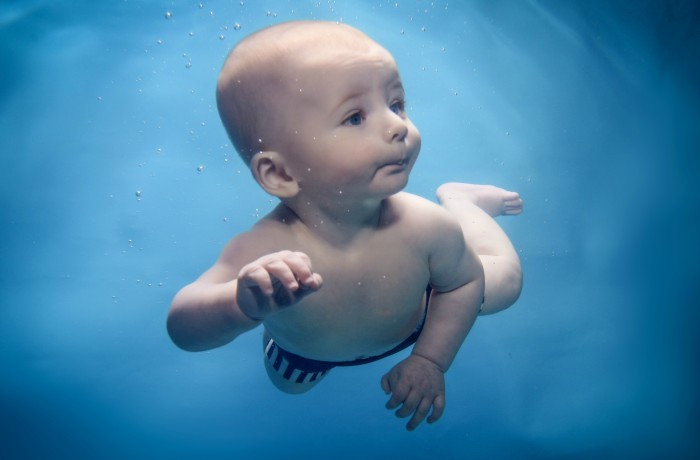What is the Gag Reflex

Many people don’t know that babies are born with many different natural reflexes, and after spending 9 months suspended and cushioned by the amniotic fluid in mums tummy it’s not surprising that babies will feel a natural and almost instant affinity to being in water. This is one of the reasons why, at Swimbabes recommend starting your babies swimming journey as soon as possible, as babies natural instincts are at their strongest during the early stages of life. As babies start to grow and develop they can lose their water confidence and can even become quite fearful of being in the water.
The pharyngeal reflex, or laryngael spasam are both scientific terms used to describe the more commonly known gag reflex, which is one of several natural reflexes that develop when a baby is in the womb. But what is it, how does it work and how do we use it to aid baby swimming?
When water touches a babies face, nose, roof of the mouth (soft palate) or throat box, it instantly effects and changes how they breathe. When the gag reflex is automatically triggered, it works instinctively by allowing your little one to hold their breath, which in turn stops them inhaling any water during a swim. This is why during our warm up activities at the start of a lesson, we scoop water over the baby’s head as this will trigger the protective breathing reflex, which helps your child to learn to cope with this natural reactive behaviour that their body is experiencing. Eventually they will be aware of the baby cues we use (both verbal and physical) to help them to learn to hold their breath voluntarily as they get older, which will eventually lead to them learning how to breath out under water for complete aquatic breathing.
The Science bit!
When we do a swim and your baby is fully submerged underneath the water, any water in their mouth will result in the babies glottis and epiglottis going into spasm and it’s this process that creates a watertight seal over the windpipe, and stops any water from entering their lungs, this automatic reaction can stay with a child up to the age of 18 months. It however does not stop water entering a babies stomach via the oesophagus which is why babies may sometimes swallow some water or even cough it back up after a swim. By the time this automatic reaction starts to disappear we will have taught your little swimmer to understand our baby swimming cues so that they become fully aware that they are about to go under the water, and can prepare themselves along with their breathing before being submerged, it’s amazing how quickly some babies pick up on these cues and we may even see nonverbal communication from them that they understand what is about to happen through the closing of their mouths and sometimes even their eyes.
At Swimbabes we like to feel that we work hard to help your little ones prepare themselves to learn to cope with and enjoy being in water, which is a very important life skill and one that will hopefully stay with them throughout their entire life. To book a place on our under water swimming programme you can click here

